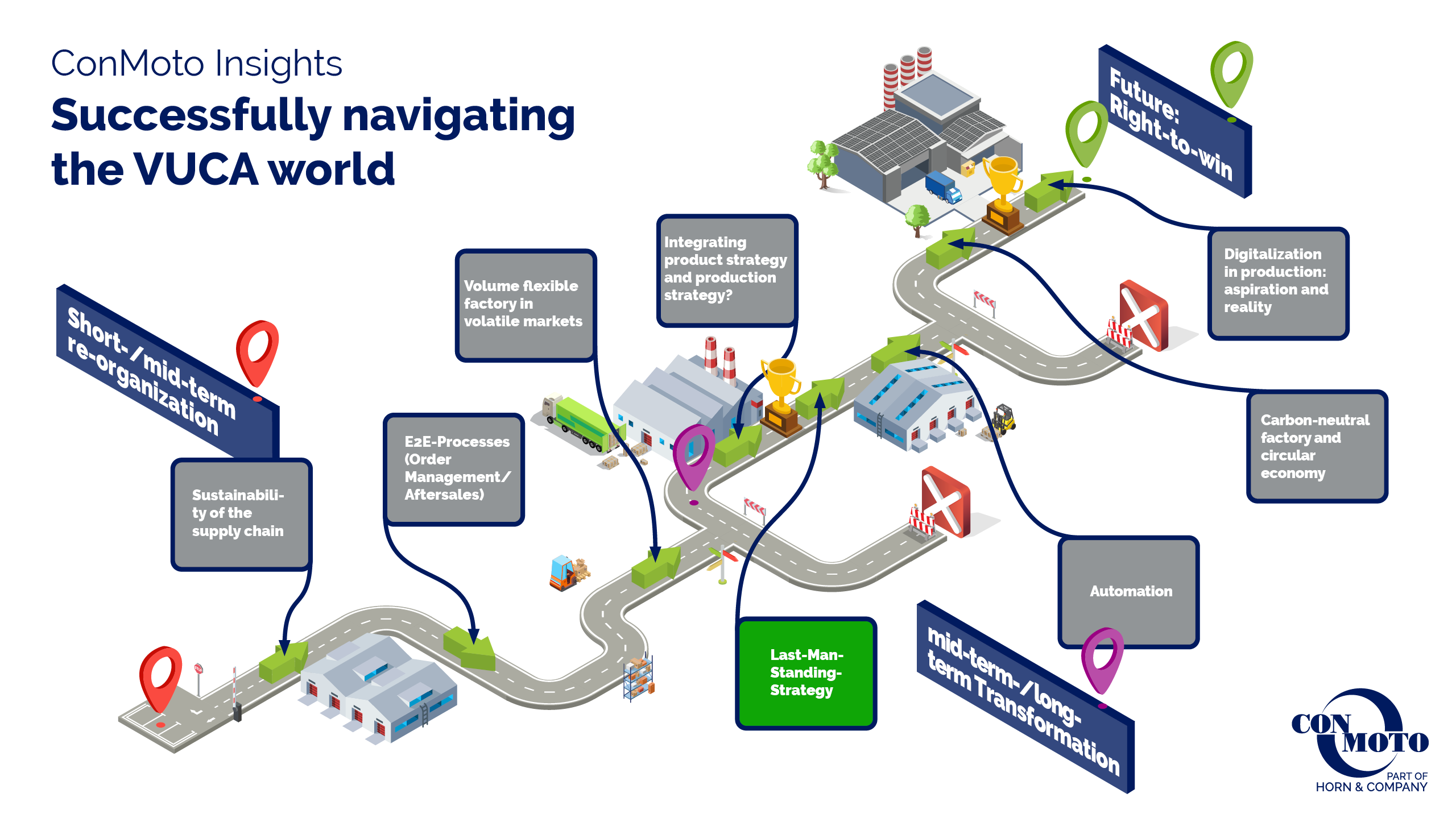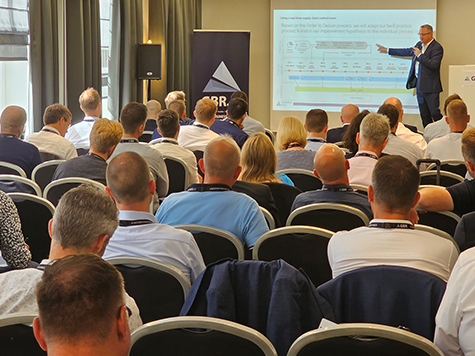
Last man standing strategies: securing success in shrinking markets

The technological change in the automotive industry in the form of the trend from combustion engines to hybrid and all-electric drives is one of the most striking examples of disruption in an industrial sector. While petrol and diesel vehicles still accounted for 98.6 percent of new car registrations in Germany in 2013 and 74.8 percent even in 2020, cars with combustion engines only managed a market share of 51.5 percent in 2023. Last year, 23.3% of new registrations were hybrid vehicles (excluding plug-in hybrids), 18.4% pure electric vehicles and 6.2% plug-in hybrids.
The trend towards e-drives and other technological developments as well as changes in customer behavior are further increasing the pressure on car manufacturers and suppliers to adapt, including autonomous or semi-autonomous driving, changing mobility behavior and changes in production processes due to advancing automation and digitalization.
Companies must act now and initiate the strategic change for products and production. The aim of last man standing (LMS) strategies is to reduce the production and sales of products that are likely to be discontinued, in this case engines and powertrains for petrol and diesel vehicles, as profitably as possible. At the same time, it is important to ensure the necessary flexibility to be able to adapt to changing market conditions and benefit from new market opportunities. New technological expertise must be built up so that OEMs and suppliers can supply the drive systems that are approved by regulators - keyword CO2 emissions - and that are in demand by customers.

Structured approach in shrinking markets
We have a structured approach that supports strategy development in shrinking markets, regardless of the industry and taking into account the individual company and market situation. A distinction is made between four basic strategies:

Internal combustion vehicles: a classic LMS scenario
In the case of combustion vehicles, we see the classic characteristics of a declining, and in the long term even disappearing, market: demand is falling, while at the same time the manufacturing industry in the automotive industry has a great deal of expertise and there is strong cost pressure due to the high number of competent competitors. The complexity is further increased by new regulations and trade conflicts, which put a strain on supply chains and in some cases make market access more difficult.
In this situation, the broad-based production networks offer potential for sensible consolidation. The LMS strategy for the optimal restructuring of production increases profitability in later product life phases and creates scope for investment in growth projects. Cost leadership is the basis for companies to survive disruptions and remain profitable even in shrinking markets. This increases the window of opportunity to restructure the product portfolio and production.
A leading position in research and development forms the second pillar and is the prerequisite for long-term success in markets that continue to develop even under disruptive conditions. Companies achieve this by using new technologies to make production processes more flexible and consolidate production capacities. They also improve their competitiveness through measures that go beyond company boundaries: These include strategic partnerships and the early involvement of suppliers and customers in development processes. A successful LMS strategy combines pragmatic cost aspects with innovation-driven measures that initially secure the existence of your company and, in a second step, sustainably increase your company's profitability.
Combining cost and technology leadership
In this rapid development phase of the automotive industry, the LMS principle is shaping the business world. But the industry is just one example. New technologies and new environmental and sustainability standards are radically changing numerous markets and industries. In order to be successful with LMS, a consistent transformation of entire business areas is required, as demand is in sharp decline and will disappear in the medium to long term. LMS focuses on cost leadership and thus on competitiveness.




